Gem Profile- Moonstone
Would you like to know more about any of the Feldspars that we covered? Here they are again: Amazonite, Labradorite, Moonstone, Sunstone.
Moonstone, or White Labradorite?
At the end of my labradorite profile, I mentioned white labradorite being called moonstone. This is because the popular stone that we jewelry designers call "rainbow moonstone" is not moonstone at all! Rather, it is a more translucent, white-to-colorless version of labradorite, a plagioclase feldspar.
Moonstone, or White Labradorite?
At the end of my labradorite profile, I mentioned white labradorite being called moonstone. This is because the popular stone that we jewelry designers call "rainbow moonstone" is not moonstone at all! Rather, it is a more translucent, white-to-colorless version of labradorite, a plagioclase feldspar.
Orienting the best play of color, white labradorite is most often made into cabochons, but the variety better known as "rainbow" can be found in clean pieces large enough to facet. Facet-grade rainbow moonstone can be found in North America, Mexico, Greenland, Norway, Sweden, Madagascar and Australia. Most of the rainbow moonstone cabochons sold on today's market are from India.
Pictured:
Faceted "Rainbow Moonstone" is geologically White Labradorite. Private collection, Dale Armstrong.
and
"Rainbow Moonstone" cabochon combined with amethyst and a gold sapphire captured in a wire pendant made by Dale "Cougar" Armstrong.
Pictured:
Faceted "Rainbow Moonstone" is geologically White Labradorite. Private collection, Dale Armstrong.
and
"Rainbow Moonstone" cabochon combined with amethyst and a gold sapphire captured in a wire pendant made by Dale "Cougar" Armstrong.


Moonstone Facts
Geologically speaking, true moonstone is an orthoclase feldspar gem-rock that has combined with one or two of the following minerals: albite, adularia, perthite, peristerite, or sandine. The first moonstone to be historically documented was of the adularia type, found in the Adula mountains of Switzerland. However, archaeological discoveries on the island of Sri Lanka (formerly Ceylon) prove that once again, many beautiful stones were used way before modern man decided to put a claim on them.
Moonstone wire wrapped by Beverly Brown
Geologically speaking, true moonstone is an orthoclase feldspar gem-rock that has combined with one or two of the following minerals: albite, adularia, perthite, peristerite, or sandine. The first moonstone to be historically documented was of the adularia type, found in the Adula mountains of Switzerland. However, archaeological discoveries on the island of Sri Lanka (formerly Ceylon) prove that once again, many beautiful stones were used way before modern man decided to put a claim on them.
Moonstone wire wrapped by Beverly Brown

Natural moonstone can be found in colors of white, bluish-white, gray, silvery-white, and sometimes pale orange or peach. Some experts claim that only those stones that are white with a blue sheen can be labeled as moonstone. Most moonstone specimens contain insect-like parallel inclusions that are known as "centipedes." A well-cut moonstone may show sharp eyes and occasionally four-rayed stars. The majority of gem quality moonstone found is of the adularia variety, for which another special word was invented describing the "inner glow" schiller effect, Adularescence. This property causes a milky, bluish sheen to float across the top of a well-cut stone, resembling moonbeams, thus "moonstone" received its name.
A peach moonstone that has been carved to resemble the "man in the moon." Private collection, Dale Armstrong.
A peach moonstone that has been carved to resemble the "man in the moon." Private collection, Dale Armstrong.

Moonstone Sources and Imitations
Translucent, adularia moonstone is most often found in the form of water-worn pebbles that have eroded from pegmatite masses. In most mining locations, these gravels have formed layers between rock and dirt and the material needs to be shoveled and hauled to a rushing water source, like a sluice or a river. Here the dirt is placed onto screens so the dirt can be washed away and the moonstone bits can be separated from the remaining debris. Needless to say, good quality moonstone is rarely found in a size that might be called large.
The most popular "mines" I mention above are located in the countries of Sri Lanka, Burma, and India, where moonstone is found in the pastel shades of pink, yellow, green, and white. North American areas include Ontario, Canada, and Virginia, and in New Mexico, sanidine moonstone is a special find. Moonstone is also found in Switzerland, Madagascar, Brazil, Kenya, and western Australia.
The most common imitation for moonstone is glass, usually a type of glass known as opalite. Chatoyant chalcedony can also be mislabeled as moonstone. You probably should also know that because the word selenite comes from the Greek word relating to the moon, some people think moonstone can also be called selenite but selenite is a totally different mineral belonging to the gypsum group, and not the feldspars.
A pair of calibrated peach-tone moonstone cabochons. Private collection, Dale Armstrong.
Translucent, adularia moonstone is most often found in the form of water-worn pebbles that have eroded from pegmatite masses. In most mining locations, these gravels have formed layers between rock and dirt and the material needs to be shoveled and hauled to a rushing water source, like a sluice or a river. Here the dirt is placed onto screens so the dirt can be washed away and the moonstone bits can be separated from the remaining debris. Needless to say, good quality moonstone is rarely found in a size that might be called large.
The most popular "mines" I mention above are located in the countries of Sri Lanka, Burma, and India, where moonstone is found in the pastel shades of pink, yellow, green, and white. North American areas include Ontario, Canada, and Virginia, and in New Mexico, sanidine moonstone is a special find. Moonstone is also found in Switzerland, Madagascar, Brazil, Kenya, and western Australia.
The most common imitation for moonstone is glass, usually a type of glass known as opalite. Chatoyant chalcedony can also be mislabeled as moonstone. You probably should also know that because the word selenite comes from the Greek word relating to the moon, some people think moonstone can also be called selenite but selenite is a totally different mineral belonging to the gypsum group, and not the feldspars.
A pair of calibrated peach-tone moonstone cabochons. Private collection, Dale Armstrong.

Moonstone in Culture
All of the different types and colors of moonstone have been known about and used by humans for centuries. In the 1800s, white moonstones were especially used in engagement rings. Due to the fact that most astronaut controlled space flights have been launched from the Kennedy Space Center in Florida, including the expedition that landed Neil Armstrong and Edwin Aldrin on the moon, Florida adopted moonstone as its state stone in 1970. Moonstone was once called "the traveler's stone," as some believe it will protect them from any dangers while traveling, and it is also an alternate birthstone for those born in the month of June (others being pearl and alexandrite).
Moonstone Wrapped in Argentium and 14kt Gold Filled Wire by Jane Elizabeth Duke
All of the different types and colors of moonstone have been known about and used by humans for centuries. In the 1800s, white moonstones were especially used in engagement rings. Due to the fact that most astronaut controlled space flights have been launched from the Kennedy Space Center in Florida, including the expedition that landed Neil Armstrong and Edwin Aldrin on the moon, Florida adopted moonstone as its state stone in 1970. Moonstone was once called "the traveler's stone," as some believe it will protect them from any dangers while traveling, and it is also an alternate birthstone for those born in the month of June (others being pearl and alexandrite).
Moonstone Wrapped in Argentium and 14kt Gold Filled Wire by Jane Elizabeth Duke

Ancient peoples thought the phases of the moon changed the Adularescence of a polished moonstone, becoming the best when the moon was full. As such, those who use moonstone for metaphysical reasons believe that its energy is balancing and "lunar," relating to "new beginnings." Moonstone is used to cleanse negativity from the aura, and its energies are attainable when the stone is either worn or carried.
Carved Moonstone Faces wrapped in sterling silver wire by Tina Bowersox
Carved Moonstone Faces wrapped in sterling silver wire by Tina Bowersox

Resources
Print Resources:
The Audubon Society Field Guide to North America Rocks and Minerals by Charles W. Chesterman and Kurt E. Lowe, ISBN 0-394-50269-8
Colored Stone, Vol. 22 No. 6, Dec 2009, Interweave Press
Gem and Lapidary Materials by June Culp Zeitner, ISBN 0-945005-24-5
Gemstones of the World by Walter Schumann, ISBN 0-8069-3088-8
Love Is in the Earth by Melody, ISBN 0-9628190-3-4
Peterson Field Guide to Rocks and Minerals by Frederick H. Pough, ISBN-0-395-91096-X
Simon & Schuster's Guide to Gems and Precious Stones by Curzio Cipriani and Alessandro Borelli, ISBN 0-671-60430-9
Internet Resources:
www.mindat.org
www.wikipedia.org
www.yourdictionary.com
Print Resources:
The Audubon Society Field Guide to North America Rocks and Minerals by Charles W. Chesterman and Kurt E. Lowe, ISBN 0-394-50269-8
Colored Stone, Vol. 22 No. 6, Dec 2009, Interweave Press
Gem and Lapidary Materials by June Culp Zeitner, ISBN 0-945005-24-5
Gemstones of the World by Walter Schumann, ISBN 0-8069-3088-8
Love Is in the Earth by Melody, ISBN 0-9628190-3-4
Peterson Field Guide to Rocks and Minerals by Frederick H. Pough, ISBN-0-395-91096-X
Simon & Schuster's Guide to Gems and Precious Stones by Curzio Cipriani and Alessandro Borelli, ISBN 0-671-60430-9
Internet Resources:
www.mindat.org
www.wikipedia.org
www.yourdictionary.com
Materials

Wire

Sterling Silver Bead with Pave Moonstone 15mm - Pack of 1
K9-134
- Lesson Quantity: 1.00 pieces
- Purchase Quantity: 1.00 each
- Price: $70.97
- Gold Club Price: $53.23

Sterling Silver Bezel Connector Rainbow Moonstone Pear 10X7mm - Pack of 1
K4-81
- Lesson Quantity: 1.00 pieces
- Purchase Quantity: 1.00 each
- Price: $2.78
- Gold Club Price: $2.09

Sterling Silver Pendant Charm w/Pave Diamonds & Rainbow Moonstone 38x8mm - Pack of 1
K1-109
- Lesson Quantity: 1.00 pieces
- Purchase Quantity: 1.00 each
- Price: $69.07
- Gold Club Price: $51.80

Peach Moon Stone 10x14mm Rectangle Cabochon - Pack of 1
E8-35O
- Lesson Quantity: 1.00 pieces
- Purchase Quantity: 1.00 each
- Price: $6.60
- Gold Club Price: $4.95

White Moon Stone 10x14mm Oval Cabochon - Pack of 1
E8-34B
- Lesson Quantity: 1.00 pieces
- Purchase Quantity: 1.00 each
- Price: $6.00
- Gold Club Price: $4.50

White Moon Stone Cabochons

Peach Moon Stone
Tools

Ultimate wire-pliers Set
G15-20
- G15-20
- Lesson Quantity: 1.00 pieces
- Purchase Quantity: 1.00 each
- Price: $99.95
- Gold Club Price: $74.96

Bench Tools
- Category: General Education
- Technique(s): General Education






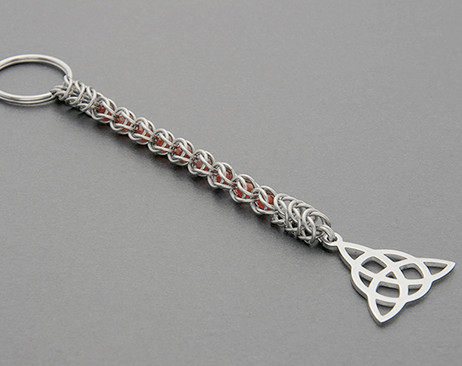
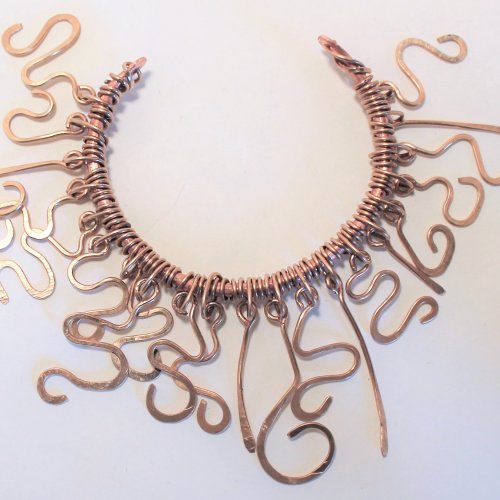


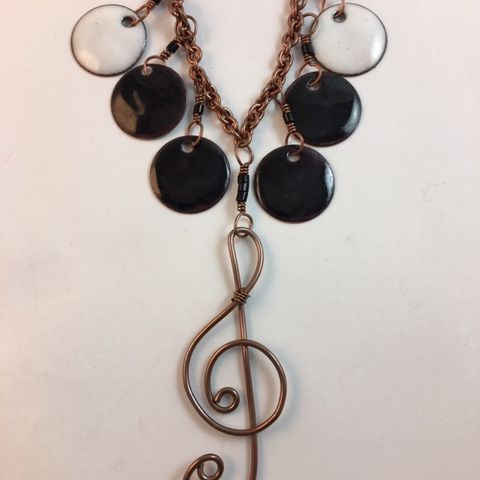
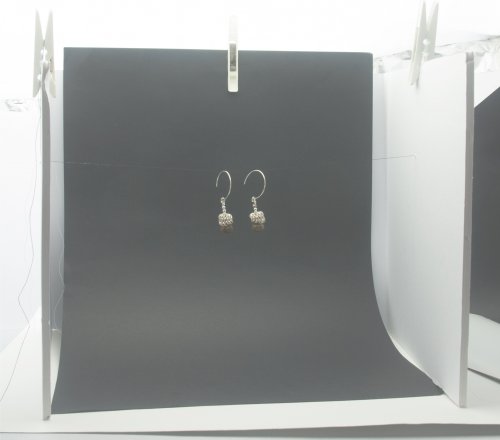

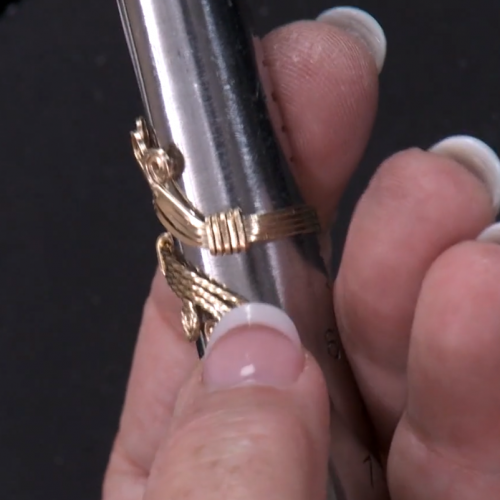

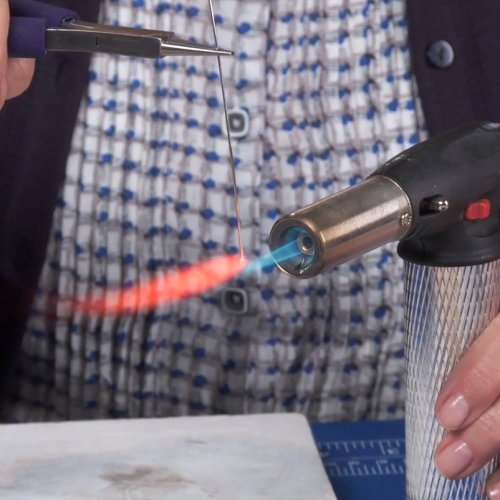

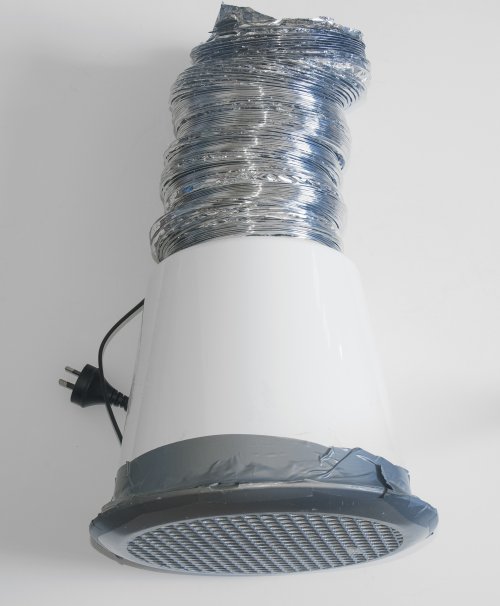
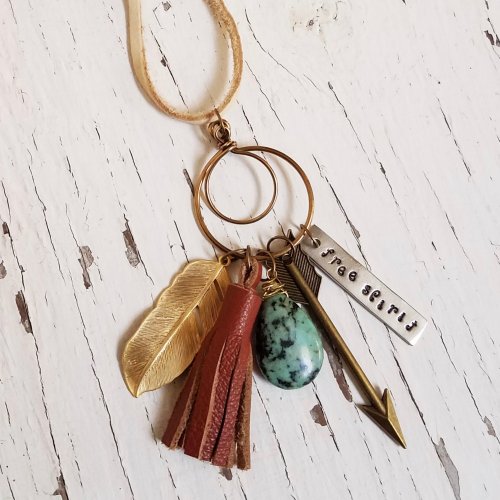
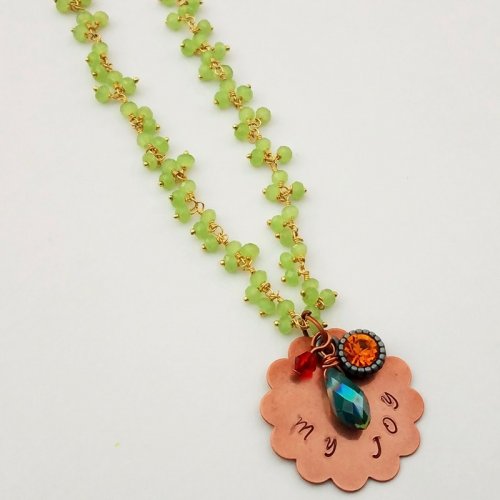
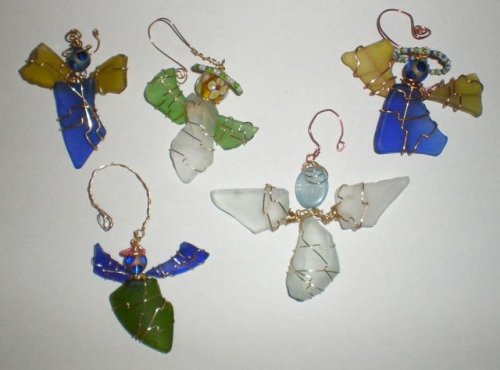
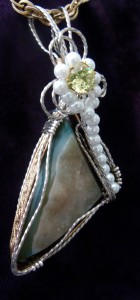
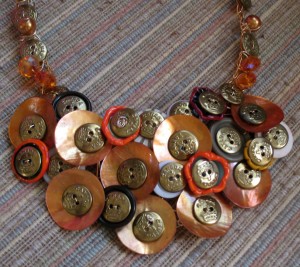
 Getting Twisted - Jewelry Making Tools
Getting Twisted - Jewelry Making Tools How to Price Your Wire Jewelry
How to Price Your Wire Jewelry How to Measure Gemstones for Settings
How to Measure Gemstones for Settings Cool Anklets are HOT
Cool Anklets are HOT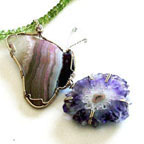 Inspiration Comes from Everywhere and Every Thing
Inspiration Comes from Everywhere and Every Thing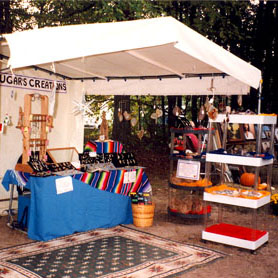 Wire Jewelry Display and Booth Ideas
Wire Jewelry Display and Booth Ideas Where to Sell Your Wire Jewelry
Where to Sell Your Wire Jewelry How to Choose Wire Temper for Making Jewelry
How to Choose Wire Temper for Making Jewelry What Gauge of Wire Should I Use to Make Jewelry
What Gauge of Wire Should I Use to Make Jewelry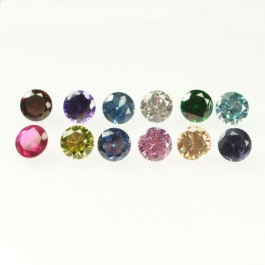 What's a Cubic Zirconia Stone
What's a Cubic Zirconia Stone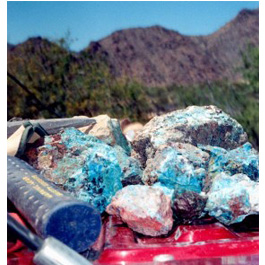 Rockhounding - A Beginner's Guide
Rockhounding - A Beginner's Guide What Shape of Wire Should I Use to Make Jewelry
What Shape of Wire Should I Use to Make Jewelry Gem Profile- Bloodstone
Gem Profile- Bloodstone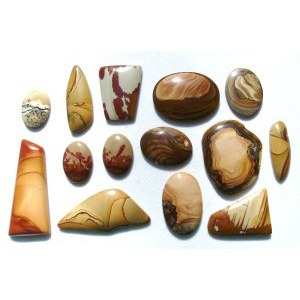 Gem Profile- Picture Jasper
Gem Profile- Picture Jasper Gem Profile- Patterned Jaspers
Gem Profile- Patterned Jaspers Gem Profile- What is Jasper
Gem Profile- What is Jasper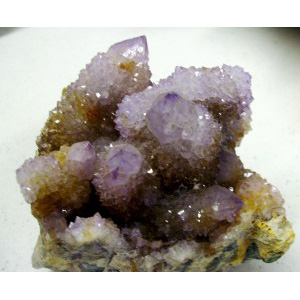 Gem Profile- Quartz Introduction
Gem Profile- Quartz Introduction Gem Profile- Wishful Turquoise
Gem Profile- Wishful Turquoise Gem Profile- Amethyst
Gem Profile- Amethyst Gem Profile- Fluorite
Gem Profile- Fluorite Gem Profile- Obsidian
Gem Profile- Obsidian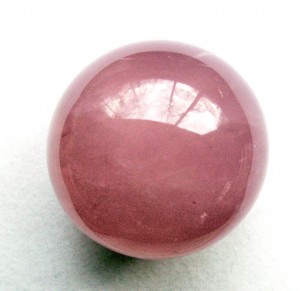 Gem Profile- Rose Quartz
Gem Profile- Rose Quartz Gem Profile- Smoky Quartz
Gem Profile- Smoky Quartz Gem Profile- Citrine and Ametrine
Gem Profile- Citrine and Ametrine Gem Profile- Labradorite
Gem Profile- Labradorite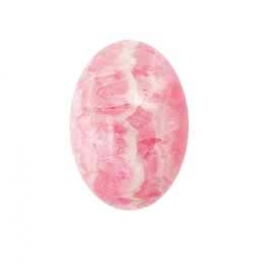 Gem Profile- Rhodochrosite
Gem Profile- Rhodochrosite Gem Profile- Prehnite
Gem Profile- Prehnite Gem Profile- Jade
Gem Profile- Jade Gem Profile- Amazonite
Gem Profile- Amazonite Gem Profile- Corundum
Gem Profile- Corundum Gem Profile- Quartz with Inclusions Part 1
Gem Profile- Quartz with Inclusions Part 1 Gem Profile- Quartz with Inclusions Part 2
Gem Profile- Quartz with Inclusions Part 2 Gem Profile- Aventurine
Gem Profile- Aventurine Gem Profile- Macrocrystalline Quartz
Gem Profile- Macrocrystalline Quartz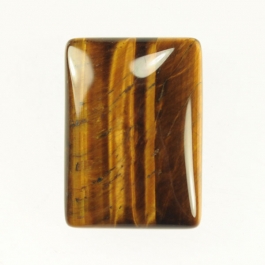 Gem Profile- Tiger Eye
Gem Profile- Tiger Eye Gem Profile- Fire Agate and Iris Agate
Gem Profile- Fire Agate and Iris Agate Gem Profile- Amber
Gem Profile- Amber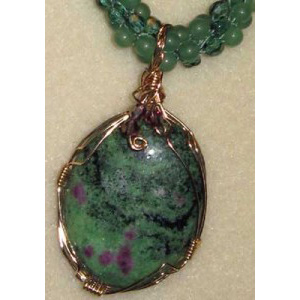 Gem Profile- Ruby Zoisite
Gem Profile- Ruby Zoisite Gem Profile- Ruby Fuchsite
Gem Profile- Ruby Fuchsite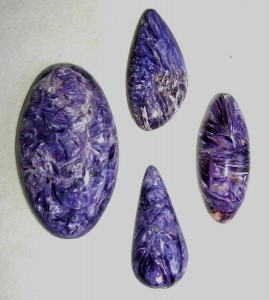 Gem Profile- Charoite
Gem Profile- Charoite Gem Profile- Moldavite
Gem Profile- Moldavite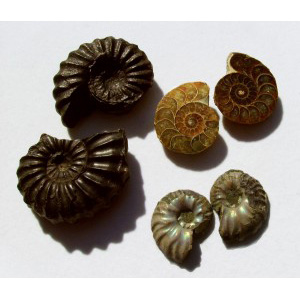 Gem Profile- Ammolite
Gem Profile- Ammolite Gem Profile- White Precious Opal
Gem Profile- White Precious Opal Gem Profile- Opalized Fossils
Gem Profile- Opalized Fossils Gem Profile- Boulder Opal
Gem Profile- Boulder Opal Gem Profile- Black Precious Opal
Gem Profile- Black Precious Opal Gem Profile- Pyrite
Gem Profile- Pyrite Gem Profile- Opal Introduction
Gem Profile- Opal Introduction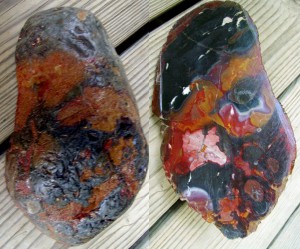 Gem Profile- Beautifully Colored Jasper
Gem Profile- Beautifully Colored Jasper Gem Profile- Common Opal
Gem Profile- Common Opal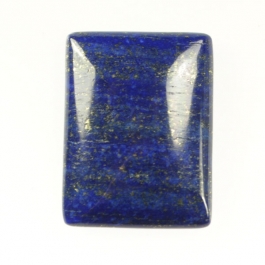 Gem Profile- Lapis Lazuli
Gem Profile- Lapis Lazuli Wire Sculpture Expert Dale -Cougar- Armstrong Interview
Wire Sculpture Expert Dale -Cougar- Armstrong Interview

